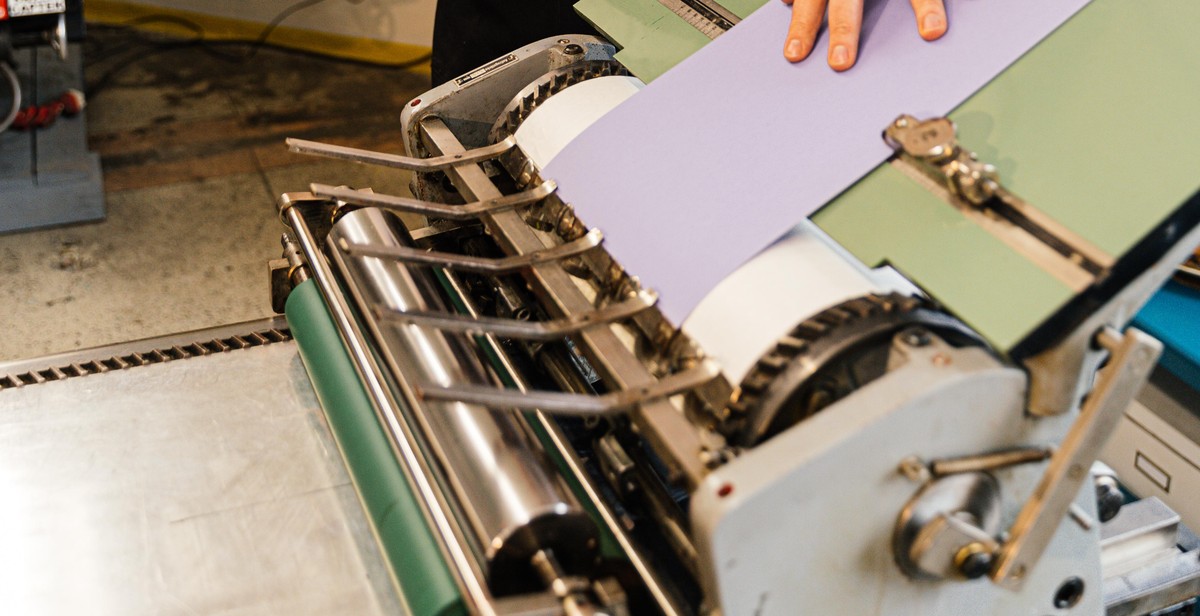How to Combine Fonts in Web Design: Achieving Readability and Aesthetics
Fonts are one of the most important aspects of web design. They can make or break the readability and aesthetics of a website. Choosing the right combination of fonts can be a challenging task, but it’s essential to ensure that your website is both visually appealing and easy to read.
When combining fonts, it’s important to consider several factors, including the purpose of the website, the target audience, and the overall design. The right font combination can convey the message of your website and enhance the user experience.
In this article, we’ll explore the different types of fonts and how to combine them effectively. We’ll also provide tips for achieving readability and aesthetics in web design.
The Importance of Font Combinations
Font combinations can help create a visual hierarchy on your website, making it easier for users to navigate and understand the content. They also add personality and style to your website, helping to establish your brand identity.
By using a combination of fonts, you can create a unique and memorable experience for your users, while still maintaining readability and accessibility.
Types of Fonts
There are four main types of fonts: serif, sans-serif, script, and display. Each type has its own unique characteristics and is best suited for different purposes.
- Serif fonts are traditional and elegant, making them a great choice for formal or professional websites.
- Sans-serif fonts are modern and clean, making them a good choice for minimalist or contemporary designs.
- Script fonts are decorative and elegant, making them a good choice for creative or artistic websites.
- Display fonts are bold and attention-grabbing, making them a good choice for headlines or titles.
Understanding the different types of fonts and their characteristics is key to selecting the right combination for your website.

The Importance of Choosing the Right Fonts
Choosing the right fonts is crucial in web design. The fonts you choose will affect the overall readability and aesthetics of your website. Readability refers to how easy it is for visitors to read and understand the content on your website. Aesthetics, on the other hand, refers to how visually appealing your website is. Both of these factors are important in creating a website that is both informative and engaging to your audience.
Readability
Readability is affected by various factors, including font size, line spacing, and font style. When choosing fonts for your website, it is important to consider the readability of each font. Serif fonts, for example, are often used for body text because they are easier to read in print. Sans-serif fonts, on the other hand, are often used for headings and titles because they are more modern and visually appealing.
Aesthetics
Aesthetics are also important in choosing fonts. The fonts you choose should complement your website’s overall design and branding. When choosing fonts, consider the mood and tone you want to convey. For example, if you are creating a website for a law firm, you may want to use more traditional and formal fonts, while a website for a creative agency may use more playful and modern fonts.
Overall, choosing the right fonts is essential in creating a website that is both visually appealing and easy to read. By considering the readability and aesthetics of each font, you can create a website that engages and informs your audience.

Types of Fonts
Fonts are categorized into four main types:
Serif
Serif fonts have small lines or flourishes at the ends of the letters. They are often used in print media such as books and newspapers because they are easier to read in large blocks of text. Some popular serif fonts include Times New Roman, Georgia, and Baskerville.
Sans-Serif
Sans-serif fonts do not have the small lines or flourishes at the ends of the letters. They are often used in digital media such as websites and mobile apps because they are easier to read on screens. Some popular sans-serif fonts include Arial, Helvetica, and Open Sans.
Script
Script fonts are designed to look like handwriting or calligraphy. They are often used for invitations, greeting cards, and other formal documents. However, they can be difficult to read in large blocks of text. Some popular script fonts include Brush Script, Lobster, and Pacifico.
Display
Display fonts are designed to be used in headlines and logos. They are often more decorative and attention-grabbing than other types of fonts. However, they can be difficult to read in small sizes or large blocks of text. Some popular display fonts include Impact, Cooper Black, and Lobster Two.
| Font Type | Usage | Readability | Examples |
|---|---|---|---|
| Serif | Print media | Easier to read in large blocks of text | Times New Roman, Georgia, Baskerville |
| Sans-Serif | Digital media | Easier to read on screens | Arial, Helvetica, Open Sans |
| Script | Formal documents, invitations, greeting cards | Difficult to read in large blocks of text | Brush Script, Lobster, Pacifico |
| Display | Headlines, logos | More decorative and attention-grabbing | Impact, Cooper Black, Lobster Two |

Choosing Fonts that Compliment Each Other
When it comes to combining fonts in web design, there are two main approaches: using contrasting fonts or using similar fonts. Both approaches can create a visually appealing design, but it’s important to choose fonts that also enhance readability.
Contrasting Fonts
Contrasting fonts are two fonts that are different from each other in terms of style, weight, and size. This approach creates a visual hierarchy and adds interest to the design. However, it’s important to ensure that the fonts still work well together and don’t clash.
When choosing contrasting fonts, it’s important to consider the purpose of the website and the message you want to convey. For example, if you want to create a modern and edgy design, you could combine a sans-serif font with a bold serif font. On the other hand, if you want to create a more traditional and elegant design, you could combine a serif font with a script font.
Similar Fonts
Similar fonts are two fonts that share similar characteristics, such as style or weight. This approach creates a cohesive and harmonious design, but it’s important to ensure that there’s still enough contrast between the fonts to enhance readability.
When choosing similar fonts, it’s important to consider the purpose of the website and the message you want to convey. For example, if you want to create a minimalist and clean design, you could combine two sans-serif fonts with different weights. On the other hand, if you want to create a more playful and fun design, you could combine two script fonts with different styles.
| Contrasting Fonts | Similar Fonts |
|---|---|
| Sans-serif + Serif | Sans-serif + Sans-serif |
| Serif + Script | Serif + Serif |
| Sans-serif + Script | Script + Script |
Overall, when choosing fonts for web design, it’s important to consider both aesthetics and readability. By choosing fonts that complement each other, you can create a visually appealing design that also enhances the user experience.

Combining Fonts for Readability and Aesthetics
Choosing the right fonts is crucial to achieving both readability and aesthetics on your website. Here are some tips on how to combine fonts effectively:
Hierarchy
Establishing a hierarchy is important to guide the reader’s eyes through the content. Use a font with a larger size and bolder weight for headings, and a smaller size and lighter weight for body text. This creates a clear distinction between the two and makes it easier for readers to navigate the page.
Spacing and Alignment
The spacing between letters, words, and lines can greatly affect the readability of your content. Make sure to choose fonts that have appropriate spacing and alignment. For example, a font with tight spacing and uneven alignment can be difficult to read, while a font with too much spacing can make the text look disjointed. Additionally, use consistent spacing and alignment throughout the website to create a cohesive design.
Color
Color can also play a role in creating a visually appealing website. Use contrasting colors for headings and body text to create a clear distinction between the two. Additionally, use color sparingly and strategically to draw attention to important elements on the page.
When combining fonts, it is important to choose fonts that complement each other and create a cohesive design. Use no more than three fonts on a page to avoid overwhelming the reader. By following these tips, you can achieve both readability and aesthetics on your website.

Best Practices for Combining Fonts
Combining fonts can be a tricky task, but it can also be a lot of fun. Below are some best practices to help you achieve readability and aesthetics when combining fonts in web design.
Limit the Number of Fonts Used
Using too many fonts in a design can be overwhelming and confusing for the reader. It is recommended to limit the number of fonts used to two or three. This will help maintain consistency and avoid distracting the reader.
Use Fonts with Similar Characteristics
When choosing fonts to combine, it is important to consider their characteristics. Fonts that have similar characteristics such as weight, style, and spacing, tend to work well together. Avoid combining fonts that are too similar or too different, as this can lead to a lack of contrast and readability.
Consider the Mood and Tone
The mood and tone of the content should also be considered when choosing fonts. For example, a formal or professional tone may require a more traditional font, while a playful or whimsical tone may call for a more fun and creative font. Make sure the fonts used reflect the overall mood and tone of the content.
By following these best practices, you can create a visually appealing design that is also easy to read and understand. Remember to experiment and have fun with different font combinations, but always keep readability and aesthetics in mind.

Conclusion
Choosing the right fonts for your website can be a daunting task, but with the right approach, you can achieve both readability and aesthetics. Remember that the fonts you choose should not only be visually appealing but also easy to read and understand.
When combining fonts, always consider the hierarchy of your content and use contrasting fonts to create a visual distinction between different sections. Additionally, ensure that your font choices are consistent across all pages of your website to create a cohesive design.
It’s also essential to consider the type of device your audience is using to access your website. Use responsive fonts that adjust to different screen sizes to ensure that your content is easily readable on all devices.
Finally, don’t be afraid to experiment with fonts and try out different combinations until you find the perfect fit for your website. Keep in mind that combining fonts is an art, and it takes time and practice to master it.
- Choose fonts that are easy to read and visually appealing
- Use contrasting fonts to create a visual hierarchy
- Ensure consistency across all pages of your website
- Use responsive fonts that adjust to different screen sizes
- Experiment with different font combinations until you find the perfect fit
By following these tips and tricks, you can create a visually stunning and highly readable website that engages your audience and keeps them coming back for more.
